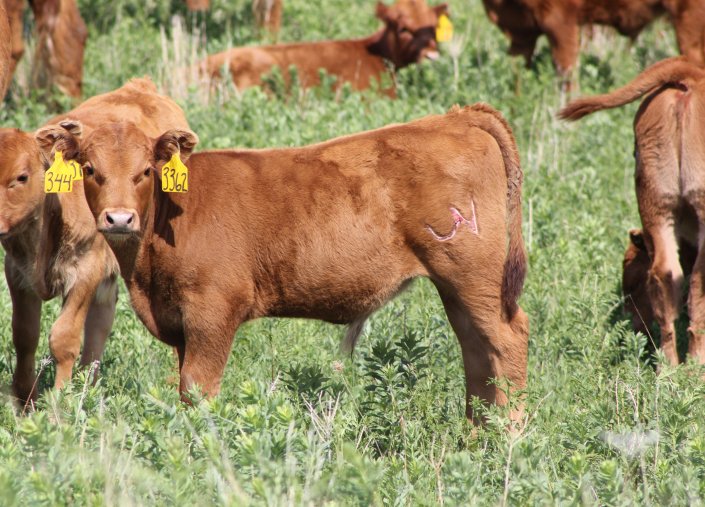
By Kate Brooks, UNL Extension Livestock Marketing Specialist & Matt Stockton, UNL Extension Agricultural Management Specialist
Early weaning of calves is one tool used by cow-calf producers to maximize profits. This may be done during a time of drought to conserve range resources or as part of an overall strategy to accomplish a specific business or personal goal. Early weaning means different things to different managers. There are at least as many options to wean calves early as there are managers. The real question is which choice might lead to increased profits or reduced losses. This of course depends on the current situation and the producer.
Since resources and rainfall are highly variable among producers, forage conditions may continue to be short with reduced hay supply, and a shortage of capital, making it necessary for some producers to consider early weaning as one mitigating option. In a typical year, many producers wean their calves at least 180 days after birth. Weaning earlier may be an economical way to conserve short resources, limit this year’s losses or increase profits. Given these facts producers facing these conditions may wish to consider the following options and any other that may look promising:
1) weaning early (latter part of July) and immediately selling the calves, taking advantage of selling off season, possibly obtaining higher prices for lighter weight calves, and minimizing use of their current forage supply,
2) weaning now and removing the calves from the pasture but utilizing an alternate feed source other than their range until calves reach their normal weaning age/weight, or
3) wait and do nothing which might require supplementing both the cow and calf pair.
The second scenario, early weaning calves and feeding them until the normal weaning age might include different feeding strategies, such as putting calves on a ration that would increase weight beyond the average weaning weight expected. Producers could feed a number of different rations to alter their average daily gain (ADG). Three such rations we thought might be applicable assuming July/August weaned calves weighing about 300 pounds were:
1) to feed hay and cake to achieve an ADG of 1.9 pounds, making them gain similar to what they would as unweaned calves,
2) feed hay and distillers grains to achieve an ADG of 2.4 pounds, a higher plan of nutrition with higher than normal gains, or
3) feed just hay and limit ADG to about 1.12 pounds.
Various calf prices and costs alter which strategy provides the best outcome, making it important to do a thorough analysis.
The idea of weaning early and selling immediately is a stop loss strategy that allows producers with limited access to capital resources to potentially continue to ranch by minimizing losses or increasing profits. However, it is important to note, that this is not guaranteed and may lead to larger losses or decreased profits. It is only through careful analysis that a best choice can be made for this or any other proposed option. For example, if hay prices soften and calf prices remain strong the additional weight gain in the calves will more than likely offset the added costs. Tools producers may find useful in making these calculations are the “Cow-Calf Cost Cow-Q-Lator” or any other Excel spreadsheet. The important thing is to consider any such decision carefully, objectively and with the best and most complete information possible with professional help if needed (Extension Professional, Banker, Accountant, etc.).
The “Cow-Calf Cost Cow-Q-Lator,” can be found at http://westcentral.unl.edu/agecon3. This tool can help producers analyze the above scenarios or any other scenario relative to cow costs. It is a straightforward process of changing the costs and price ranges of calves, feed costs, calf weights, labor and any other costs or variable. This tool has the added advantage of including risk, providing an estimated range of input costs and profitability, allowing the producer to analyze which scenario provides the best potential range of returns.
For more UNL Beef information go to http://beef.unl.edu